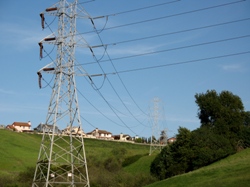33% by 2020: It’s (almost) The Law
 After two failed attempts, California is moving ahead with the most aggressive renewable energy goal in the country. Today the State Assembly passed SB 2x, a bill that requires utilities to get 33% of their electricity from renewable sources like solar and wind, by 2020.
After two failed attempts, California is moving ahead with the most aggressive renewable energy goal in the country. Today the State Assembly passed SB 2x, a bill that requires utilities to get 33% of their electricity from renewable sources like solar and wind, by 2020.
By all accounts, utilities will need to add an unprecedented amount of renewable energy to meet the goal. Peter Miller of the Natural Resources Defense Council says that will spur new technology and green job opportunities. “There’s worldwide competition to lead this industry, which is the growth industry of the 21st century,” said Miller. “And this moves us, I believe, to the front of the pack.”
If the 33% renewable portfolio standard (RPS) doesn’t sound new, that’s because it isn’t. The goal was originally set by former Governor Arnold Schwarzenegger in a 2008 executive order. Supporters knew that an executive order could be overturned by a future governor, but two previous bills aiming at cementing the goal failed to make it into law.
Miller says that’s why today’s passage is such big news for the renewable energy industry. “Businesses need that stable foundation to be confident that these investments are in line with the long term direction of the state,” he said. The State Senate has already passed the bill and Governor Jerry Brown is widely expected to sign it into law.
Critics of the bill cited cost as a major concern, since renewable energy still comes with a higher price tag than its fossil counterparts. Under the bill, the California Public Utilities Commission must devise a cost containment strategy, something that isn’t in place under the executive order. Concerns over the cost of renewable energy emerged recently in this report from the Division of Ratepayers Advocates.
Notably, the bill puts the RPS back into the hands of the CPUC. Before leaving office, Schwarzenegger had directed the California Air Resources Board to adopt a 33% mandate as part of his climate change goals.
California’s three largest utilities have yet to meet the 2010 RPS of 20%, though they are expected to in the next year or so. Both solar and wind projects have faced delays due to lawsuits and permitting challenges, which has led many to conclude that the 33% goal may be out of reach (there’s more on the specific challenges in our 33×20 series).
NRDC’s Miller says he sees the permitting process getting better. “I think we’ve learned a lot about the siting process,” he said. It took some real work among all the stakeholders and we need to continue that effort to ensure that we can achieve these goals, because they are ambitious.”

